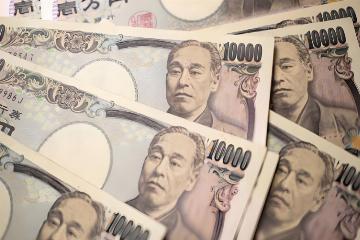Bank of Japan Raises Interest Rates as Scheduled
Advertisements
Advertisements
In its announcement, the BOJ highlighted that the key driver for this increase was ongoing wage growth and a gradual rise in inflation towards the target rate of 2%. For years, Japan has struggled with deflation, with low and even negative inflation significantly hampering economic growthThrough this rate hike, the BOJ is attempting to strike a balance between stimulating economic growth and controlling inflation, guiding the economy toward a healthier trajectory.
Advertisements
For an extended time, the Japanese government has issued vast amounts of national debt to stimulate the economy, resulting in a substantial debt loadUnder a low interest rate environment, the debt burden remains relatively manageable, allowing the government to repay interest with less difficultyYet, should rates increase, the government's interest expenses will significantly surge, creating immense pressure on an already fragile fiscal situationAdditionally, raising interest rates is likely to elevate borrowing costs for both businesses and individuals, potentially stifling investment and consumption, leading to adverse impacts on economic growthBased on these factors, Simon White believes that the yen may strengthen further.
Advertisements
The yen strengthened significantly, resulting in increased values for yen-denominated assets, which drew considerable international capital back to JapanConcurrently, both Japanese and U.Sbond yields fell as the rate hike depressed bond prices, which have an inverse relationship with yieldThe volatility in the bond market further transmitted shockwaves into equity markets, resulting in a global sell-off as investors hurriedly liquidated stocks to avoid risksAlthough the market eventually stabilized, and the S&P 500 index reached new highs by September, that event left a lasting impression of caution among investors.
- US Cuts Costs Without Rate Cuts
- AI Investment: Bridging Virtual and Real Worlds
- Why Investors Are Wary of Bank Stocks
- NVIDIA Faces AI Test After Stock Drop
- Europe's EV Market Stalling?
Furthermore, widening the range of spot execution prices or extending the maturity period enhances the inclination for yen strengthIn Euro/JPY options trading, this tendency is even more pronounced, with the implied probability of yen appreciating 3% against the euro in a month hovering around 30%, whereas the probability of depreciation is only about 24%. These figures vividly illustrate the increasing expectation among investors for a stronger yen in the foreign exchange options market, which may also suggest a greater likelihood of certain arbitrage strategies being unwound.

He posits that before the previous rate increase, the yen had already appreciated significantly, thus the market may have absorbed some of the potential impacts of the hikeThis time around, traders are likely better prepared for possible adjustmentsAfter the turmoil of last year, investors and market participants have become more sensitive to adjustments in the BOJ's monetary policy and are now more inclined to manage risk prudentlyThey are expected to take preemptive measures to reconfigure their investment portfolios to mitigate potential market fluctuationsNevertheless, White cautions, “The potential risks of the BOJ's rate hike cycle still loom large; the BOJ's balance sheet represents a tail risk that is severely underestimated by global markets.” Under a prolonged era of quantitative easing, the BOJ has accumulated a massive balance sheet of assets, and any changes in its asset size or structure could have profound implications for global financial markets
An unexpected event could trigger significant market turmoil stemming from this underappreciated tail risk.
Leave A Comment